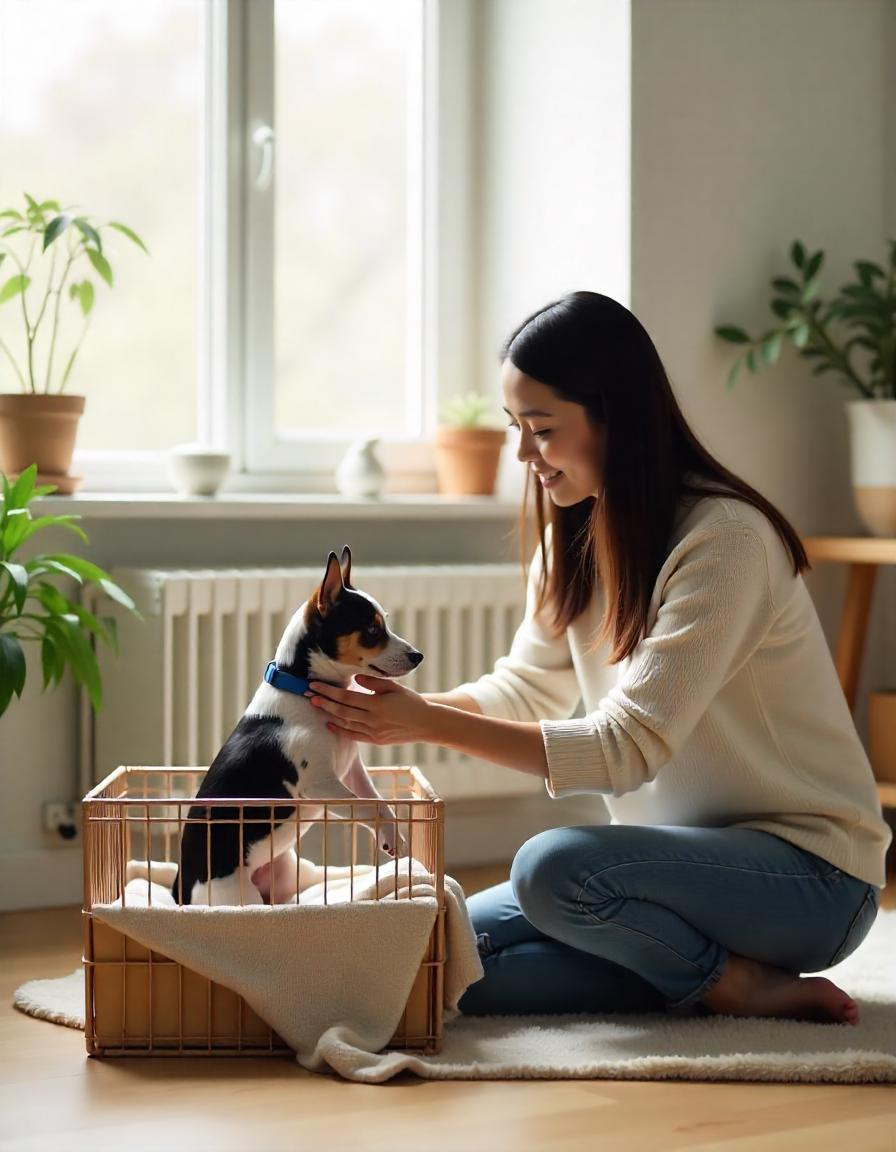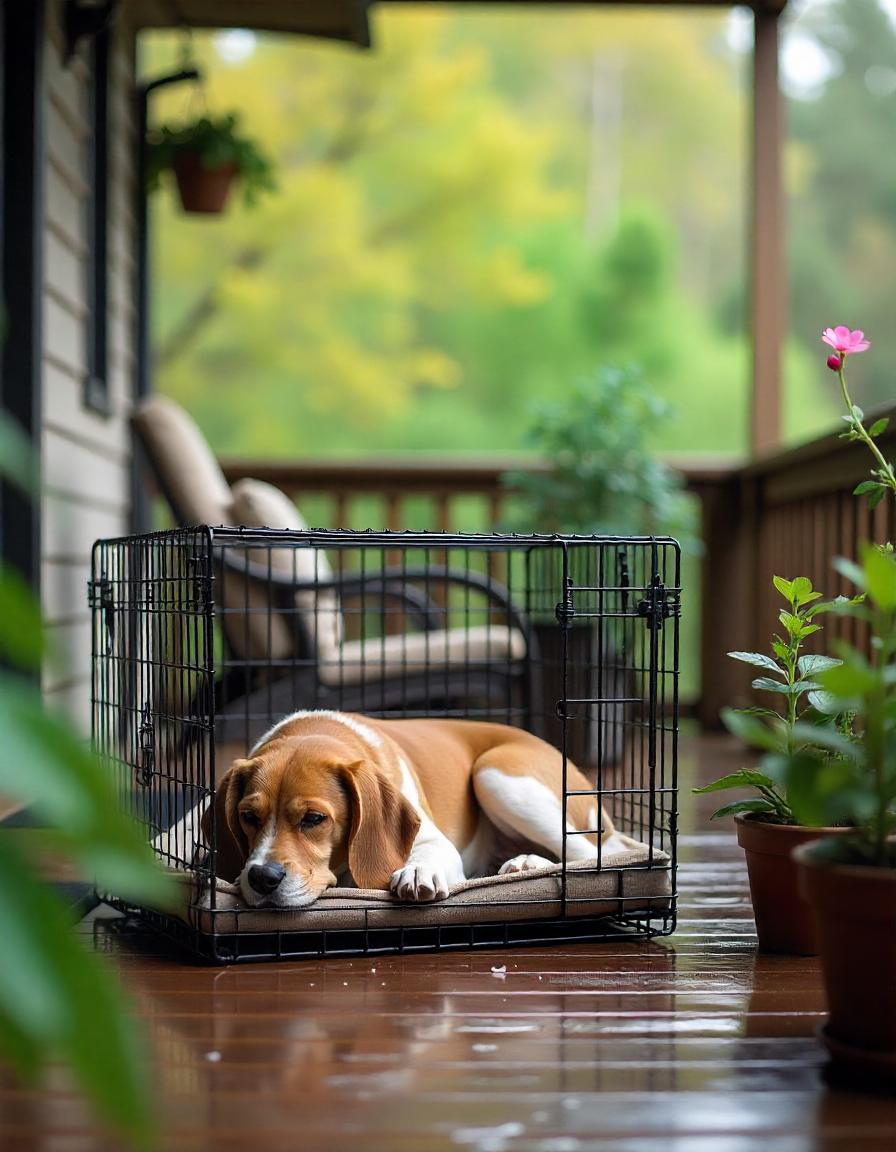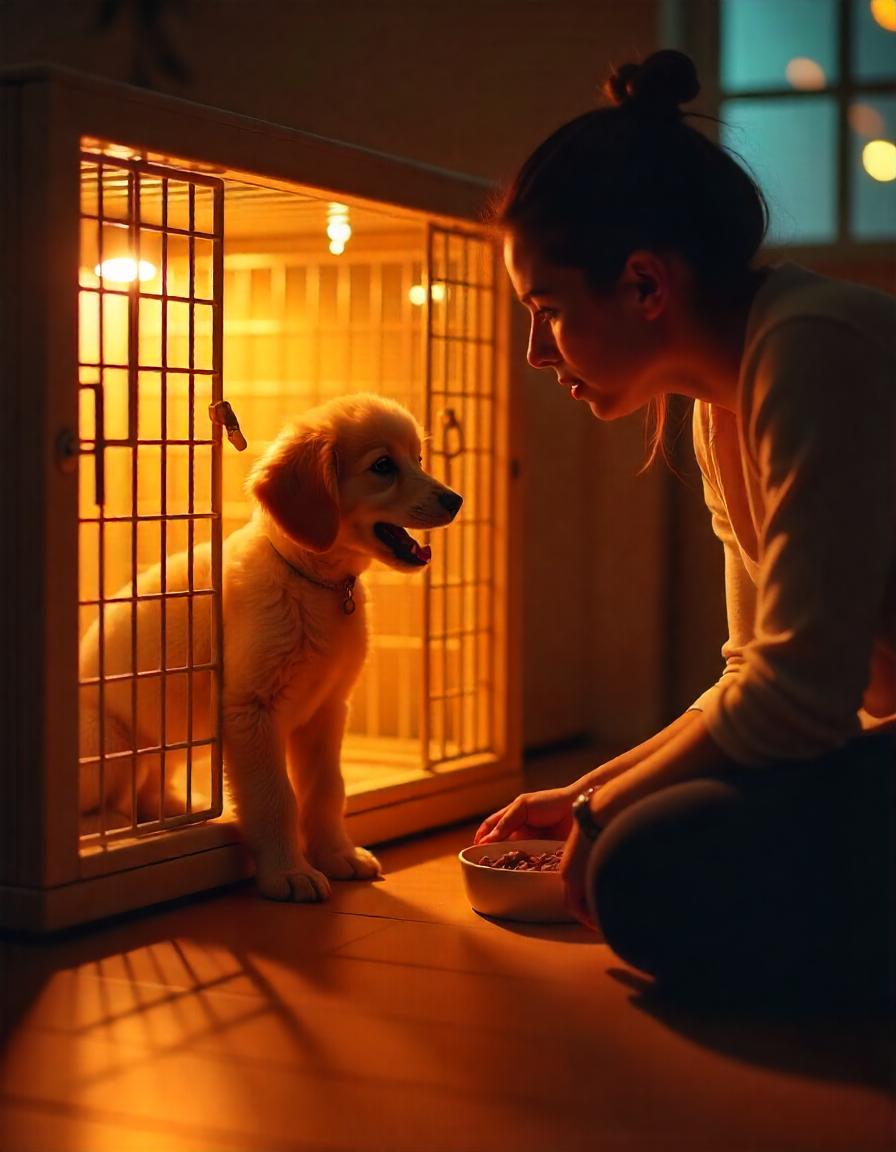
How to Introduce Your Dog to a New Crate (Step-by-Step Guide):- Cate training is one of the best approaches to providing your dog with a safe and positive environment. It’s about giving your animal friend a quiet, secure place they can call their own, not about captivity. A properly trained dog will consider their box a sanctuary, not a punishment, making your life (and theirs) significantly more straightforward. Whether your goal is to crate-train an older dog or you are a new puppy parent, this book will walk you methodically through the process.
How to Introduce Your Dog to a New Crate (Step-by-Step Guide): Why Does Crate Training Matter?
Crates are crucial for fostering good behaviors and guaranteeing your pet’s safety. They provide a sense of security and comfort, and here’s why they are so important:
A Safe Haven: A crate becomes your dog’s haven a peaceful place where they can feel safe and calm, just like we all need our own safe space.
Aid in Training: Crates are great instruments for house training and teaching dog’s limits.
Safety During Travel: A crate guarantees your dog’s calm and protection whether you travel by road or to the veterinarian.
That said, crate training requires patience and optimism; it is not something to rush through. With gentle guidance, your dog will come to adore its designated area.
How to Introduce Your Dog to a New Crate (Step-by-Step Guide):
1. Appreciating The Function of a Dog crate

Safe Haven: Not a Punishment
The first guideline of crate training is simple but crucial: a crate should never seem like punishment. It should instead be a cozy place where your dog can unwind.
Training and Transport Crates
Crates teach your dog house training through bladder and bowel control. They are also essential for travel since they offer familiarity and safety in foreign surroundings.
2. Selecting The Correct Crate for Your Dog
Size Matters
Your dog should be able to stand up, turn around, and comfortably lie in the box. Choose a box with divisions, so puppy crate training can “grow” with it. Steer clear of large containers since they can seem less cozy.
Goods for Crates
There are several materials available, and every one of them has advantages:
- Excellent daily use from durable, well-ventilated wire crates.
- Perfect for travel and providing a more enclosed atmosphere, plastic crates.
- Ideal for calmer dogs, soft-sided crates are lightweight and portable.
- Verify that the crate’s construction requires strong, safe, and airy components.
3. Arranging a Safe and Comfortable Space within The Crate
Cozy Sheets
To make the crate inviting, arrange soft bedding or a comfy blanket. Your dog will be encouraged to spend time in a comfy resting place.
Safe, Fascinating Playthings
Add chew or puzzle toys to keep your dog occupied and develop good crate connections. Toys can also help ward off boredom, particularly during prolonged stays.
Ideal Location
Keep the crate in a shared space your dog believes belongs to the family maybe next to the kitchen or living room. Stay clear of direct sunlight and drafty areas. If your dog is anxious, covering the crate partially with a blanket will provide some security.
4. Key Concepts of the Crate Training Method
Establishing good associations and doing little, progressive actions is the secret to practical crate training.
Pay attention to positive relationships
Using food, toys, or praise makes the crate joyful. Never push your dog inside. Encourage them, instead, to investigate at their speed.
Have patience
Every dog learns crate behavior differently. While some may feel at ease in a few days, others might need several weeks. Your best friends are consistency and patience.
How to Introduce Your Dog to a New Crate (Step-by-Step Guide):
5. The First Step is Introducing Your Dog to The Crate

Getting Familiar with the Crate
Put the crate in a central spot your dog visits often. Leave the door open so your dog may sniff and investigate. Treats will draw them in closer; praise any interaction with the crate.
Patience is essential
Keep calm and let your dog investigate on its own. That’s a win, even if it sets one paw inside! Keep sessions brief, pleasant, and uplifting to prevent overloading your dog.
6. The Second Step is Gradually Extending Time in The Crate.
Encourage crate time with meals
Start giving your dog meals close to the crate. Gradually move their feeding bowl into the crate to create comfort. Close the door momentarily during meals and progressively increase the length of time your dog is contentedly eating inside.
Signs of Distress
Scale back if your dog exhibits stress whining, barking, or pawing at the door. Open the door and return to earlier steps, shorter, positive sessions.
7. Third Step: Leaving the Room (Out-of-Sight Training)
Begin with little absences
Once your dog feels at ease in the closed crate, stuff a favorite toy or treat inside, close the door, and leave the room for a few minutes. Gradually increase the time you spend out of sight.
Make Sure Entertainment
Your dog will be entertained by toys like Kong loaded with treats or activity feeders. Return when they are quiet; avoid letting them out when barking since this perpetuates the behavior.
Practice at Different Times
Train your dog to be at ease in the crate several times a day, not only when you leave the house or get ready for bed.
8. The Fourth Step is Progressively Spending More Time Alone
Prepare for Short Periods Only
Eventually, step outside and leave your dog in the crate for more extended periods. For an adult dog, try for a maximum of three hours. Puppies will call for more toilet breaks and shorter intervals.
Avoid Overstimulation
Keep your arrivals and departures under control and on a low profile. An enormous fuss can cause your dog to become unduly anxious when she is alone in the crate.
How to Introduce Your Dog to a New Crate (Step-by-Step Guide):
9. Crucially Important Factors for Crate Training
Work before crate time
Contentment in a dog comes from tiredness. Before creating, there should be lots of movement to release surplus energy and promote relaxation.
Bathroom and Feeding Requirements
Before spending time in the crate, ensure your dog takes a toilet break and is fed.
No Overuse of the Crate
The crate should never substitute valuable time with your dog. Maintain a good schedule and spend lots of time playing, exercising, and bonding outside the crate.
Master Crate Training with Patience and Positivity
A methodical procedure, crate training helps your dog to become comfortable and trustworthy between you and him. Your dog will enjoy its crate as a safe and comfy place if you have a lovely arrangement, positive reinforcement, and lots of patience.
Recall that consistency is everything. Every dog develops somewhat differently; hence, go with their pace and reward the most minor victories! See a pet trainer or local pet store materials if you have questions or require assistance with training.


